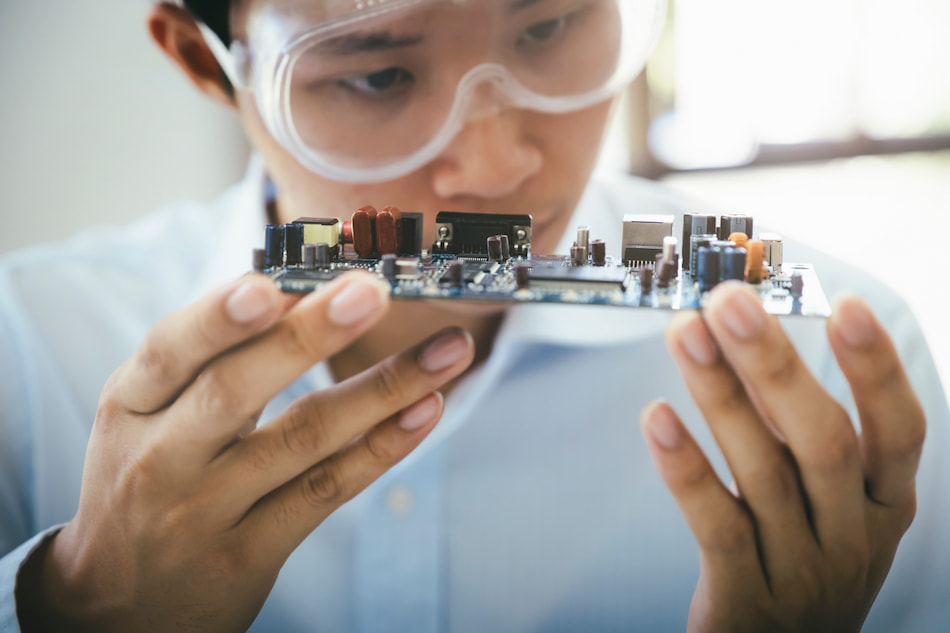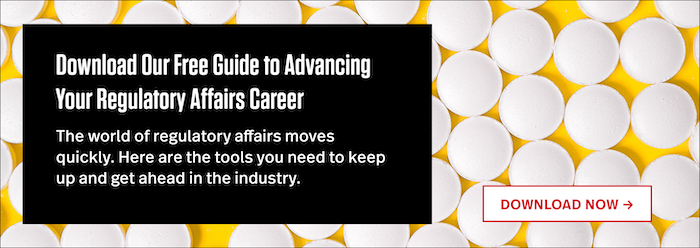

Medical devices are essential to patient care. They range in complexity and purpose, from simple tongue depressors and cotton swabs to X-ray machines and life support equipment. Despite the wide range of use cases, all medical devices have one thing in common: Before manufacturers can bring them to market, they must adhere to a number of regulatory requirements, that are designed primarily to ensure their safety.
The U.S. Food and Drug Administration (FDA) regulates these devices to ensure public health benefits and the safety of patients, health care workers, and the community. Regulatory affairs professionals help to manage these activities and help companies navigate the process. Their responsibilities include:
The field of medical device regulation is exciting for a number of reasons, including a healthy job market poised for continual growth, says Stephen Amato , PhD, and faculty director of the Master of Science in Regulatory Affairs program at Northeastern University. As he sees it, “these professionals are in high demand today. There are more available job openings than people to fill them.”
The reason for the growth, he adds, is due in part to the fast pace at which technology is moving. As more scientists and medical professionals continue to make breakthroughs, more skilled professionals are needed to effectively manage regulatory activities and help these devices make it to market.
Learn how to navigate the discipline and accelerate your regulatory career.
Amato explains that medical device regulations can be broken into two types: design and manufacturing. Design regulation focuses on having new devices approved by the FDA, keeping them in the market, and clearing marketing materials. Manufacturing medical device regulation, on the other hand, focuses on quality assurance and ensuring that the devices conform to the product specifications upon which that particular device was approved.
Medical devices are classified into Class I, II, and III. At each level, regulatory control increases, according to the FDA. Regulatory affairs professionals help manufacturers through the regulatory process throughout a product’s life cycle. The basic regulatory requirements that manufacturers of medical devices distributed in the U.S. must comply with fit into four categories, Amato says.
“These regulations are what govern and enable professionals to manage the lifecycle of biomedical products,” Amato says. “Without them, you have no way of assessing whether or not new products are safe or effective for what they’re intended to do.”
While medical device regulations are in place to ensure that products are safe, there are instances in which changes to these regulations might be made. These include technological breakthroughs and trends, as well as product defects. Medical device regulatory professionals are tasked with understanding these changes and ensuring that manufacturers meet the new expectations.
While technology is the reason for many new devices coming to market, it’s also the reason that regulations change, Amato says. “There are so many great, new technologies, but the problem with technology is that it precedes regulation,” he says. “That’s a fundamental issue in medical device regulatory affairs today.”
For instance, medical devices have been incorporating the Internet of Things in earnest for the past five to seven years, Amato says. This technology has allowed healthcare practitioners to access data from specific implants and heart monitors noninvasively, such as reading certain blood values without having blood drawn.
“For these sorts of things, technology is great, but how to regulate it from a healthcare perspective is still an unanswered question. There’s a framework of regulations in place, but we don’t have the regulations to keep up with all the advances in technology, like the specific computer languages, algorithms, and big data specifics,” he says. “Technology trends are a big part of what’s going on in medical device regulations today.”
Despite regulations and oversight, product defects are sometimes discovered through an “adverse event reporting system” or product complaints, Amato says. These defects may occur during design or the manufacturing.
One example Amato offers is that of a patient with an implant in their knee, who is complaining about pain that won’t go away. This patient might then file a product complaint with the manufacturer of the implant, and if the system identifies a trend, the product might be recalled.
“You can use big data approaches to identify patterns and trends, which might give you a clue that a part of the design or a step in the manufacturing process might need to be modified,” he says. “Technology provides an opportunity to not only make more effective devices, but to make safer devices, too.”
The field of medical device regulation is constantly changing as more biomedical breakthroughs are made. To succeed in this evolving field, professionals need to have a deep understanding of these compliance requirements.
Northeastern University’s Master’s in Regulatory Affairs is designed for students who want to become highly qualified to manage the global regulatory process for companies innovating and developing cutting-edge products in healthcare and food safety. In this program, students will deepen their understanding of the global compliance requirements for the development, marketing approval, and utilization of highly regulated products, including medical devices.
Three factors set Northeastern’s program apart from others, Amato says. First is the experiential learning opportunities.
“When you graduate, you’re going to graduate with professional experience on your resume, which is very, very important because manufacturers won’t hire regulatory people—even though there are plenty of jobs–unless they have the skill sets,” he says. “If you come through our master’s program and you don’t have much experience, you’ll have it by the time you graduate.”
The second differentiator Amato identifies is ALERT, a program where experts are brought in to discuss industry news and updates. “Sometimes they’re regulators, sometimes they’re from manufacturing. [These experts cover] all fields regulatory, from devices through to pharmaceuticals,” Amato says. “It’s an example of a value-add service to both current students and alumni to enable them to keep up with changes in the field.”
Finally, Northeastern’s robust alumni network works to set the program apart. Since the regulatory affairs program has been in place for a decade, Amato explains that current students have access to thousands of alumni for job opportunities and insight into the field.
“There’s a lot happening and changing in medical device regulatory affairs, and plenty of opportunities for the right qualified individuals,” he says.
For more information about Northeastern’s regulatory affairs program, download our e-Book below.

Kristin Burnham is a journalist and editor, as well as a contributor to the Enrollment Management team at Northeastern University.